Quaking Aspen

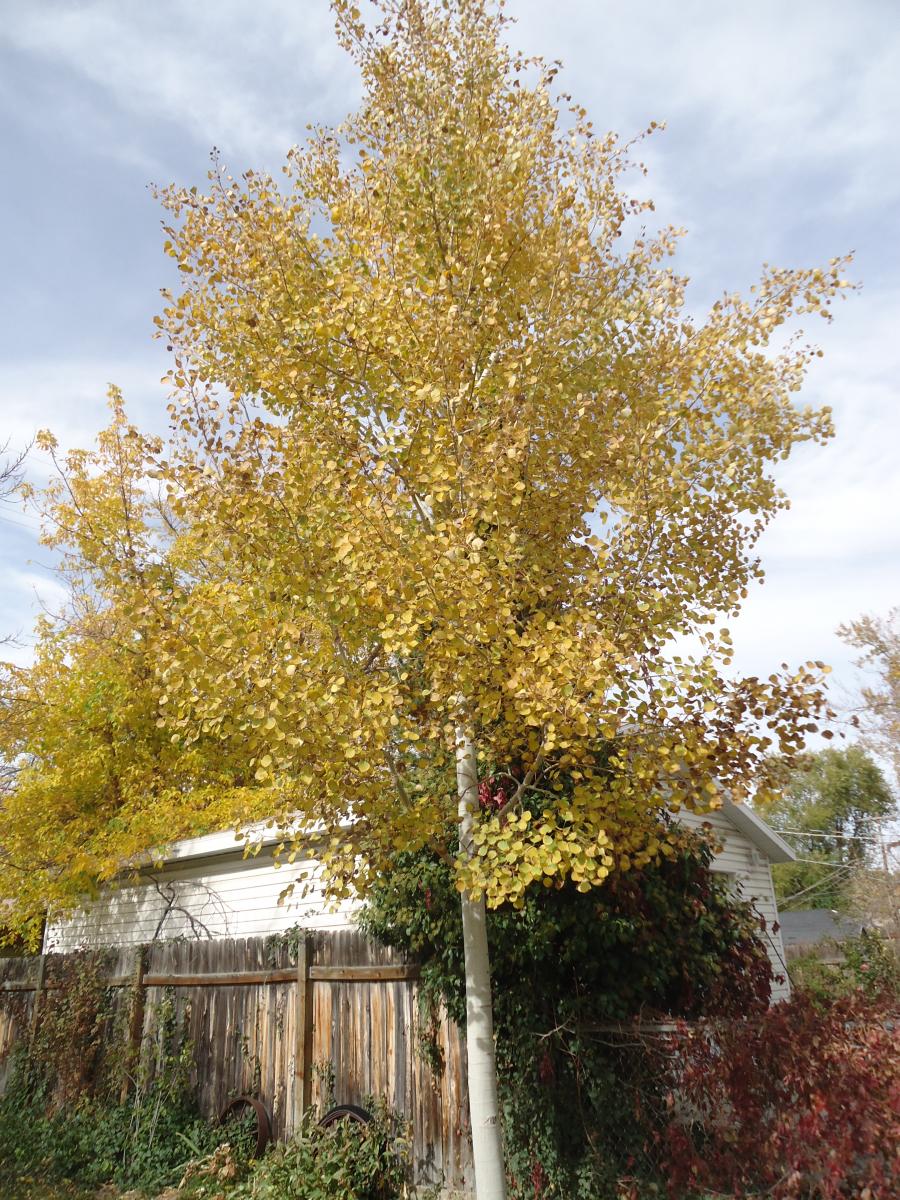

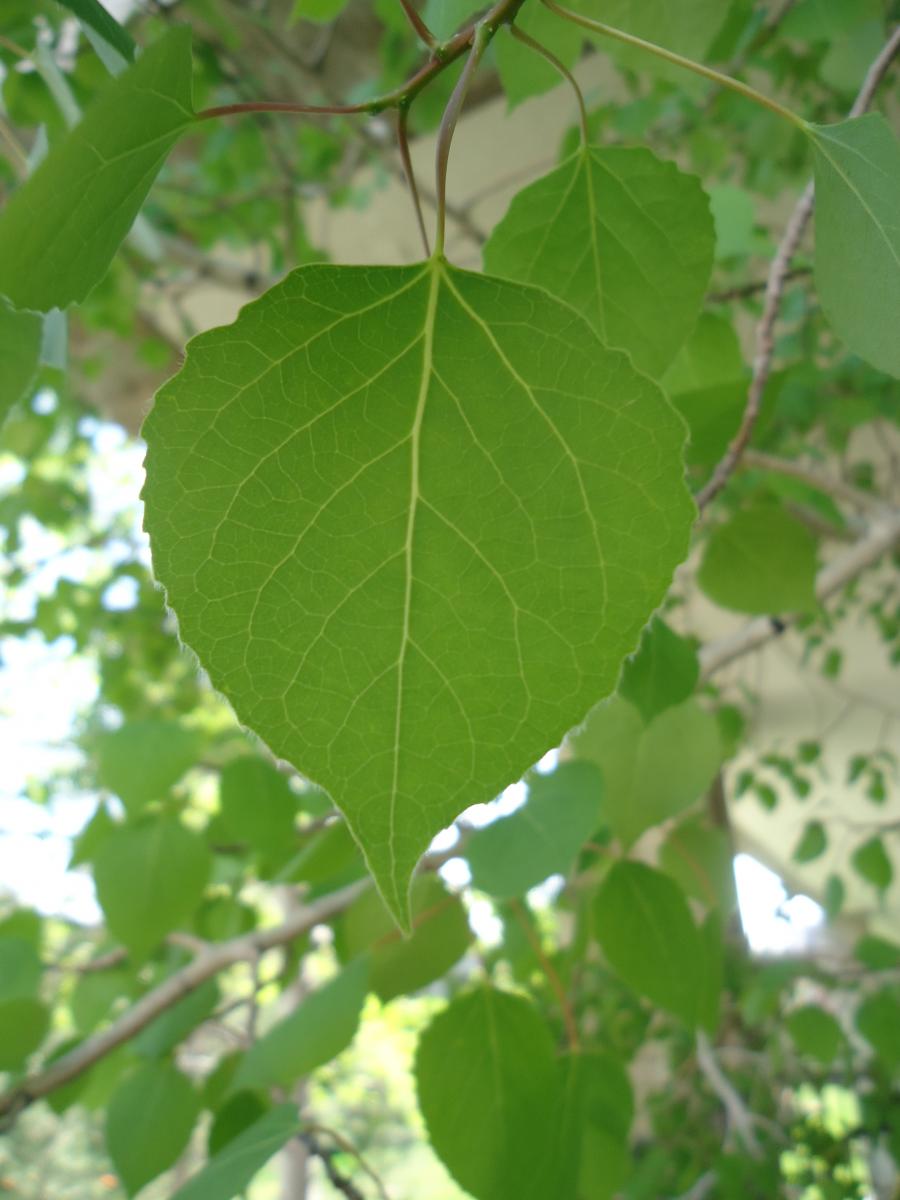
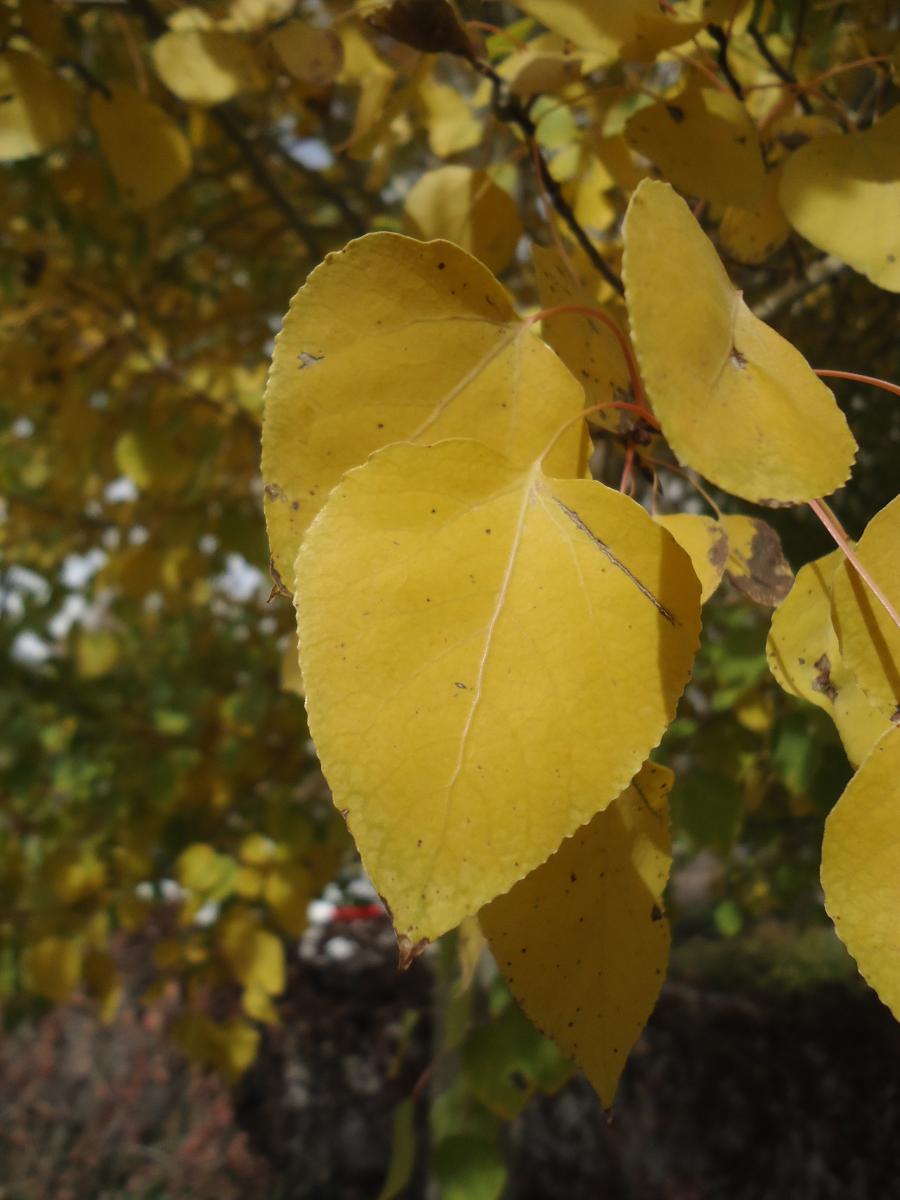
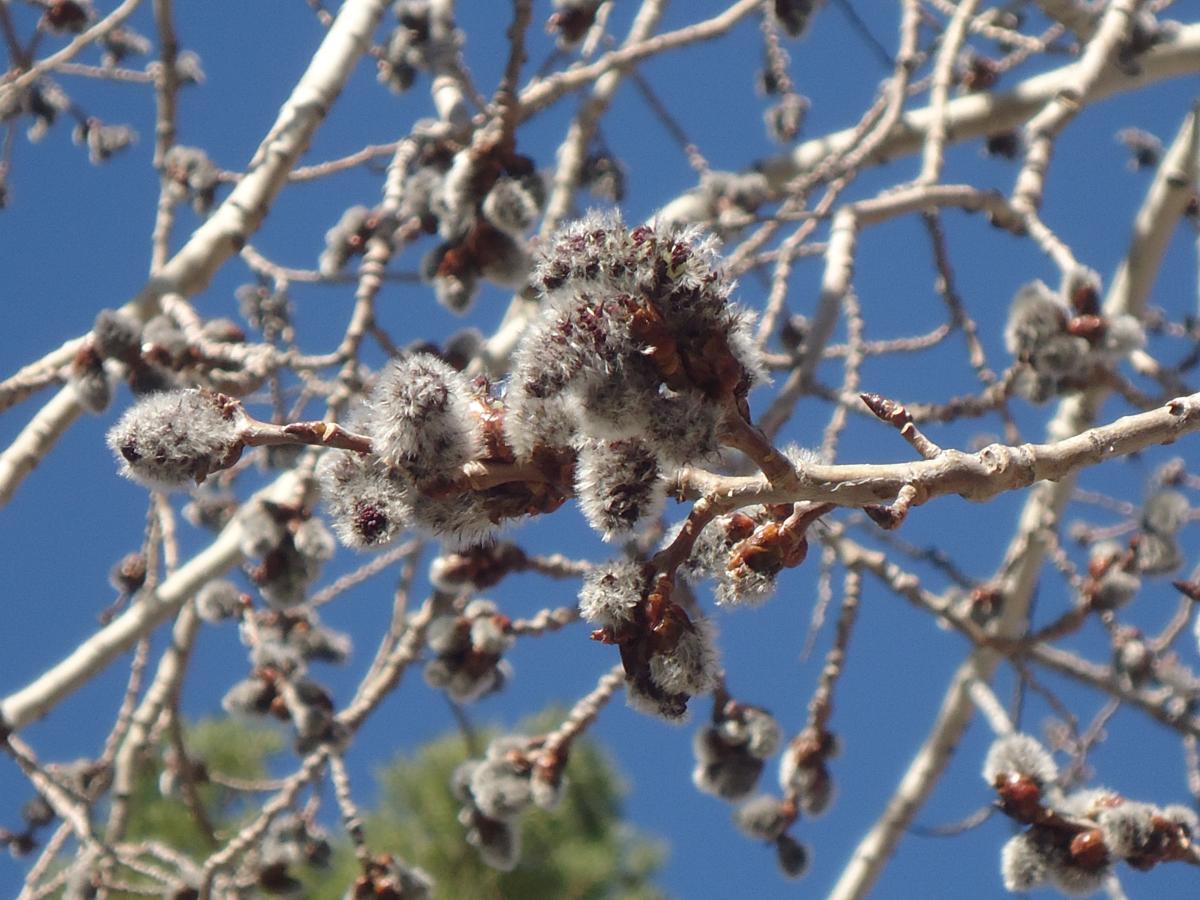
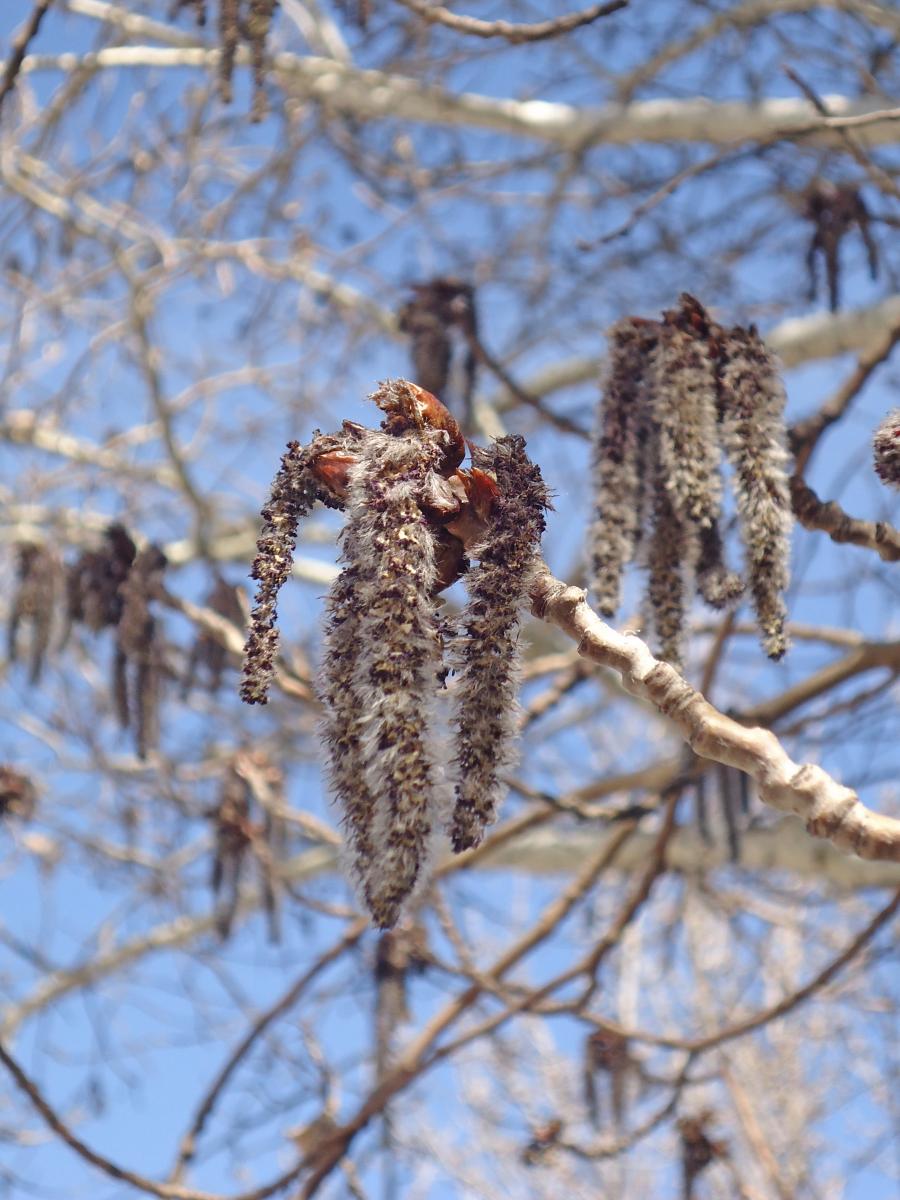
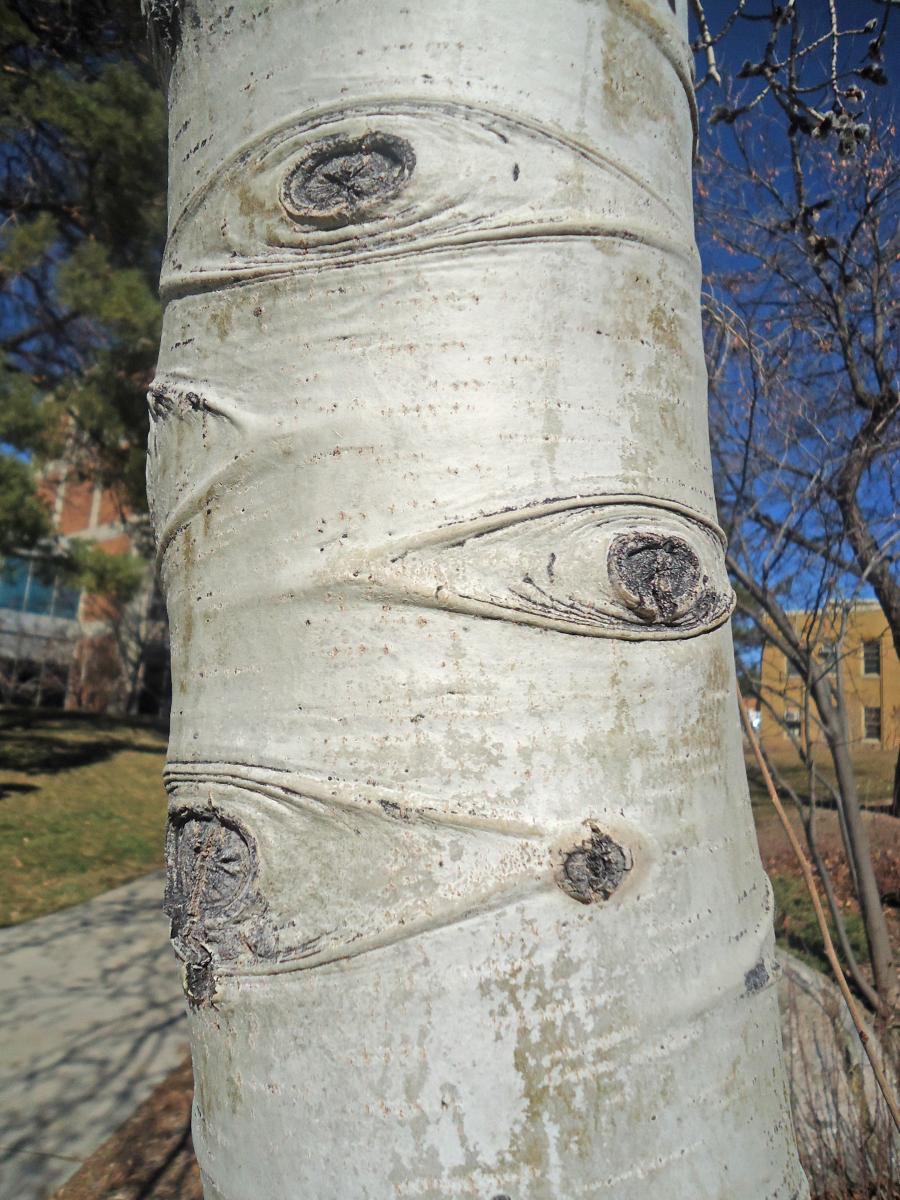
Populus tremuloides
Leaves: Deciduous. Round to broadly oval shaped leaves are 1½ to 3 inches long and wide, with a finely serrate leaf edge. Yellow-green to green color, turning bright yellow to yellow-orange in the fall. Leaf stem (petiole) is 1½ to 3 inches long, and flattened laterally, causing leaf to flutter or "quake" in the wind, thus giving the species its name.
Bark/Twigs: Smooth, thin, green-white to cream colored bark becomes dark brown or gray on older trunks and furrowed, roughened by numerous wart-like nodules.
Flowers/Fruit: Inconspicuous flowers. Fruit is a narrow conical capsule, ¼ inch long, gray and hairy. Small seeds are tufted and light brown.
Mature size and shape: Medium large. 40 feet high x 20 to 30 feet wide. Pyramidal and narrow when young, usually with a long trunk and narrow, rounded crown at maturity.
General information/special features: Plant in full sun. Very shade intolerant. Indifferent to soil conditions. Can be found in moist, rich, deep soil, to rocky shallow soils and clay. Grows in cool, moist areas. Grows in clumps or "clones" from root sprouts that are genetically identical since stems are all attached to the same root system. Pando, a grove of aspen in the Fishlake National Forest in UT, is considered one of the world's oldest and most massive living organisms, estimated at 80,000 years old. Officially designated as the Utah state tree in 2014.
Landscape use and maintenance: Shade tree. Fast growing rate. High maintenance. Relatively short lived. Not recommended for residential use. Native trees do well, but aspens do not like the hot and dry conditions in our lower valleys. Stressed aspens suffer from leaf scorch, leaf spot, borers, cankers, galls, and many other insect and/or disease problems. Best grown in cooler high-mountain climates in native style landscape. If grown at low elevations, avoid problems with older, larger trees by managing selected aspen sprouts in a large, mulched bed. Remove stems before they get very large. Sprout (sucker) growth can be a problem.
USDA Hardiness Zone: 1 to 7
Family/Origin: Salicaceae – Willow. Native in most of the northern and western U.S. and Canada, including higher elevations in Utah. Quaking aspen is the most widely distributed tree of North America. It accounts for nearly 60% of Utah's forest cover.
Campus Use: Somewhat common. Can be found northeast of Chemistry (Bld 85) or northwest of Alfred C. Emery Building (Bld 8).
